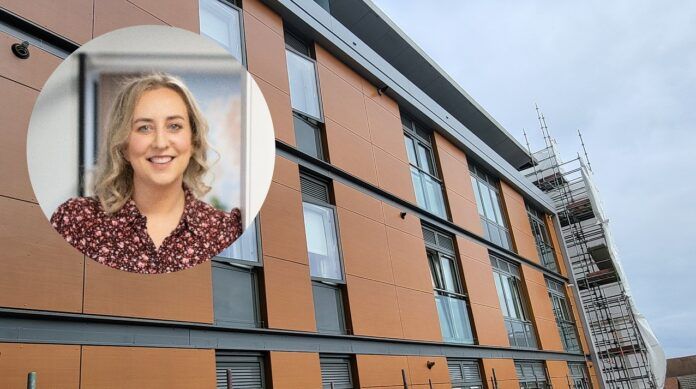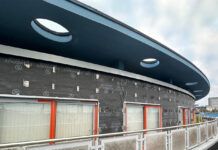Mairead Haughey, compliance manager at Anamore, addresses the Cladding Safety Scheme’s emphasis on the residential impact of remediation and how it is good practice to provide sufficient communication streams with residents when working on a building’s exterior.
Consideration for resident engagement has become a key priority of the government’s code
of practice for the remediation of residential buildings which follows on from the launch and implementation of the Cladding Safety Scheme.
Known as the biggest building intervention to date, the Cladding Safety Scheme fund has been created through a £5.1 billion allocation by government to fix the most dangerous buildings and by revenue gained through the Building Safety Levy on new developments.
Published in July 2023, the code of practice focuses on the significant impact that this type of remedial work can have on a resident’s life and identifies that efforts need to be made to minimise these effects. It has been developed with a wide range of stakeholders in mind including, residents, freeholders, developers, building remediation companies, landlords, agents and government and industry organisations.
Although the outcome of the work is to make buildings safer by mitigating fire safety risks caused by defective external wall systems, minimising inconvenience to residents and improving their experience of building remediation is a key priority.
Historically, from the initial stage of identifying the building defect to the stage of recladding could take up to seven years, residents will have experienced uncertainty and additional stress over this period, so changes to legislation to ensure that these works are expedited once all the relevant applications have been complete is a welcome reassurance to residents.
To strengthen the residents’ position, additional roles and responsibilities have been introduced to projects as part of the code of practice and golden thread of information which promote improvements in communication, efficiency, accountability, and execution.
The adoption of a number of communication methods will ensure that different audiences involved throughout the work will be informed of the specific information that they require. For example, resident leaseholders or private or social sector tenants will require different information from landlords.
We understand that the build up to remediation works can be a stressful time for residents and the works itself can be intrusive. That is why at Anamore, we have found that by offering an open initial consultation with residents and those living within close proximity of the building before work begins have been very beneficial. These sessions have provided clarity to residents and to those in the wider community of who we are and what we do. We explain what to expect during the work and how it will impact their day-to-day lives. Issues such as increased noise and congestion can be upsetting especially if projects run over, these forums provide an opportunity for discussion about how these will be managed and provides a place for questions to be asked.
Residents need to be kept informed through regular, meaningful engagement which assists in alleviating any concern about the work and helps to mitigate the impact through greater understanding of the work. We have found that outlining potential safety issues and sharing what we need from residents to ensure we can complete the work with minimal disruption has been useful. An example of this is if we are working on balconies. We ensure to erect signage and let residents know if their balconies are unusable. The restrictions are usually a precautionary measure, but it allows us to keep them safe and keep the work flowing as outlined. The use of monthly update flyers and reminders of potential disruption have also helped us to communicate these impacts and find ways to overcome them with minimal inconvenience.
Clear routes of communications are essential, ensuring there is a local resident liaison officer can help streamline communication between residents and those responsible for completing the work. Resident liaison officers can also be used to gather feedback from residents on their experiences which can be an effective way to gauge what could be improved. Listening to tenants and implementing necessary improvements during the project can help to build trust and show that care and consideration is being taken for them.
Engaging with residents and creating and improving communication streams should be more than a code of practice for remediation, it should be best practice. We have found over the years, that residents have been significantly more supportive of the work being carried out when they are aware of when it’s happening and why. Not every method will work for every client, but we need to try if we want to help ease the tensions and emotions which have become an accepted part of the cladding crisis.




